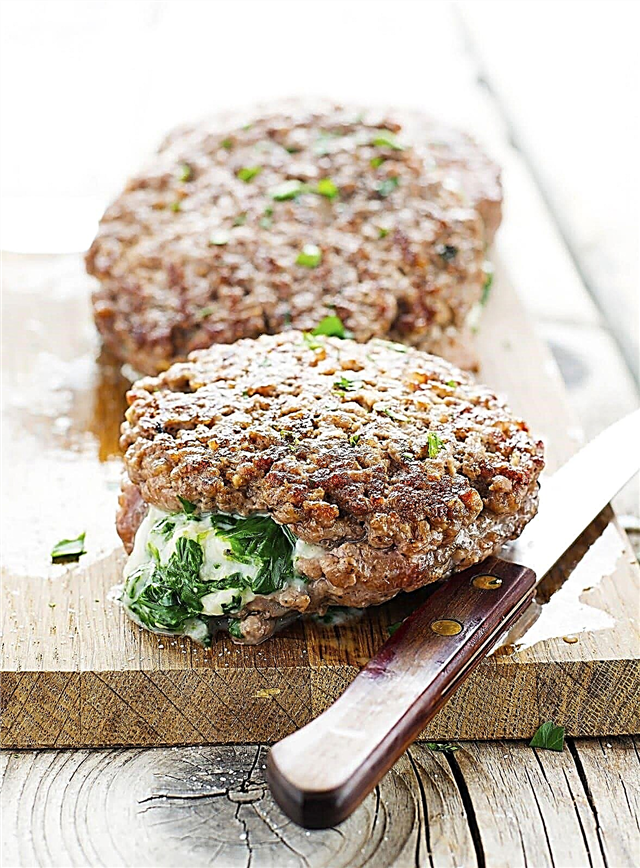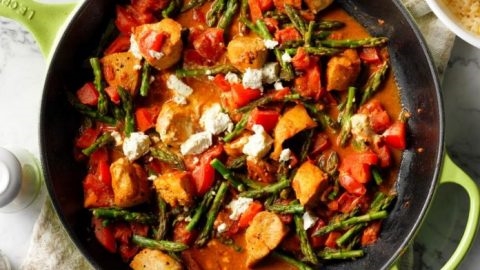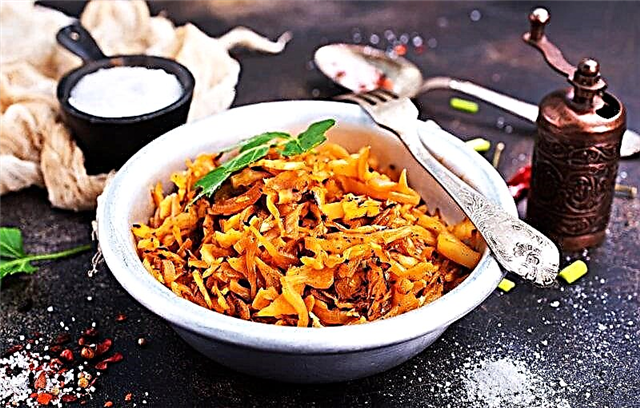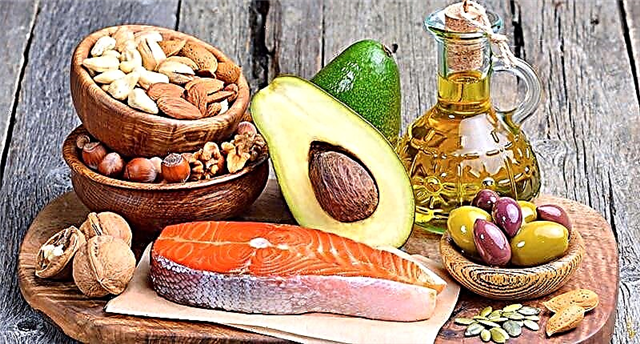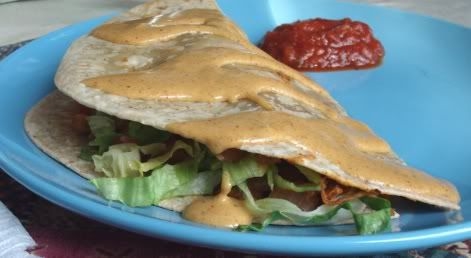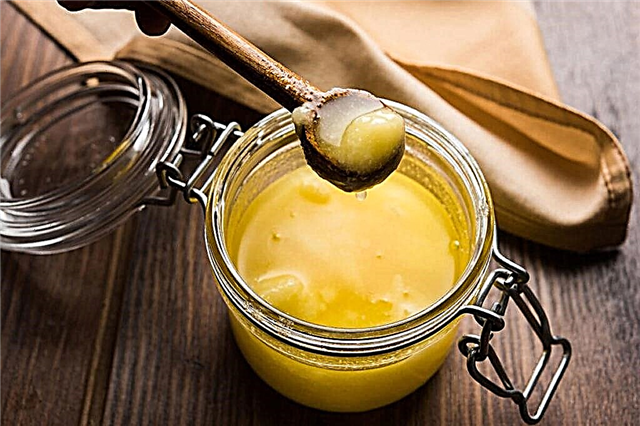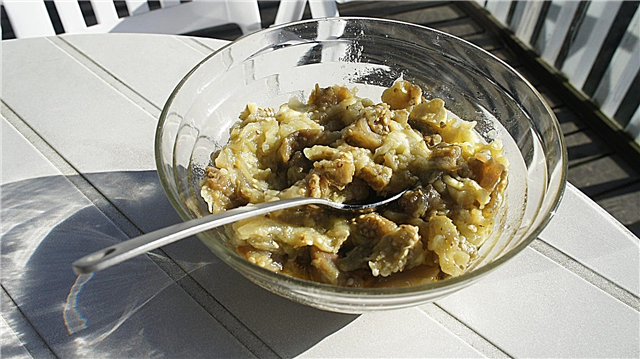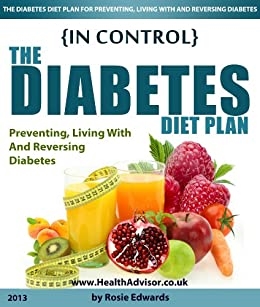Do you have type 2 diabetes or are at risk of developing it? Are you worried about your blood glucose level? Or are you caring for someone with diabetes? Then you've come to the right place. In the article "Low Carb Diet and Good Nutrition in Type 2 Diabetes for Diabetics", we will share with you information on how to improve blood glucose control through diet therapy.
Many people with diabetes or previous carbohydrate metabolic disorders (called “pre-diabetes”) have improved their health through dietary changes. This opportunity exists for you too. Due to changes in the diet for some people, it becomes possible to reduce the amount of antihyperglycemic drugs taken.
What is diabetes?
Diabetes mellitus is an increase in the level of "sugar" (glucose) in the blood. The reason for the rise in blood glucose depends on the type of diabetes. However, in all types of diabetes, there are disorders in the production and use of insulin in the human body.
In type 2 diabetes, the body initially makes insulin normally but cannot use it effectively, this is called insulin resistance. Then it becomes more difficult for the body to manage blood glucose levels. And it turns out that glucose is in excess in the vascular bed, but does not reach the organs. Excess blood glucose is harmful due to its damaging effect on blood vessels. At the same time, the internal organs are in the "starvation" mode, because glucose remains in the bloodstream and does not enter the cells of the organs. Because of this, diabetes is poetically called "hunger in the midst of abundance."
The hormone insulin, produced by the pancreas, controls the level of glucose in the blood, removes it from the bloodstream into the cells of internal organs. The more glucose in the blood, the more insulin the pancreas produces in response. Elevated glucose levels lead to a temporary excess of insulin in the blood - hyperinsulinemia. Excess insulin increases the accumulation of fatty acids in the body and slows down their breakdown, preventing the body from using fats as energy fuel.
All these pathological reactions are formed in most cases against the background of an increase in body weight and the amount of visceral fat (assessed by the waist circumference). Diet can improve the sensitivity of cells to insulin, reduce body weight, and this, in turn, improve the control of diabetes.
Diet and sugartype 2 diabetes
In the body of people with diabetes mellitus, it is difficult to maintain blood glucose levels within the normal range. Glucose enters our bloodstream from two sources: from stores in the liver and from food we eat. We cannot control the amount of glucose produced by the liver, but we can control the food we eat.
Carbohydrates
Carbohydrate food, when digested, produces large amounts of glucose. The more carbohydrates are eaten, the more glucose enters the bloodstream.
Carbohydrates are simple, quickly digestible, which are quickly absorbed during digestion, enter the bloodstream and significantly increase blood glucose. These are various sweets: containing sugar, fructose, glucose. But complex, slowly digestible carbohydrates can significantly increase blood glucose if their glycemic index is high.
The glycemic index (GI) is a measure of how quickly a product raises blood glucose compared to how much pure glucose does. The higher the glycemic index of a food, the more it increases blood glucose. For example, some foods that we think are "healthy", such as fruits, can actually increase glucose levels significantly. Likewise, "starchy" foods such as baked goods, cereals, pasta and potatoes are converted to glucose after consumption. Potatoes can raise blood glucose levels as much as nine teaspoons of sugar.
Cellulose
Dietary fiber (fiber) is found in fruits, vegetables, whole grains, and legumes. It is recommended to consume at least 25 g of fiber per day. At the same time, a larger amount of it significantly reduces the risk of cardiovascular diseases, obesity and type 2 diabetes mellitus. However, some foods contain fiber along with carbohydrates (for example, fructose in fruits), and this food will increase blood glucose levels. And in some foods (most vegetables), the fiber content is high, and carbohydrates are minimal, and they will not affect blood glucose.
Protein
Eggs, meat and fish are called protein foods. Although different people react differently to some protein foods, eating moderate amounts of protein (less than 30 grams of pure protein) generally has little effect on blood glucose levels.
Fats
We rarely eat fats in their pure form (except in vegetable oils). Basically, we eat them in one product with proteins (cheese, sour cream), carbohydrates and proteins (other dairy products) or carbohydrates (sweets, pastries, fast food). When combined with protein, fats have little effect on glucose levels. When combined with carbohydrates, it can significantly increase blood glucose levels.
How to lower blood glucose levels?
There are medications available to help lower blood glucose levels. And in a number of situations one cannot do without them. But at the heart of any type 2 diabetes treatment are changes in lifestyle, in particular in diet. Sometimes it is possible to get by only with them, sometimes not, but they are still important. What happens if you eliminate foods that greatly increase blood glucose levels from your diet? Will there be anything tasty left? Yes. These are just a few of the delicious foods that don't raise blood glucose levels:
Currently, there is a low-carb diet (keto diet) as part of diet therapy for type 2 diabetes. Against its background, the control of blood glucose improves, its variability (fluctuations) decreases, the need for drug therapy may decrease, the state of health improves, the level of energy and mental activity increases. Because of these benefits, the low carb keto diet may be recommended for people with type 2 diabetes, and many doctors recommend it to their patients. Choosing low-carb foods is an easy way to lower your blood glucose levels. If you are considering such a treatment option, you should consult with your doctor to adjust the dosage of medications when changing your diet to avoid a possible decrease in glucose levels (hypoglycemia), and also discuss if you have any restrictions or contraindications to such a diet.
What does science now say about diabetes care?
In 2019, the American Diabetes Association (ADA) released new guidelines for the management of type 2 diabetes. They point out that diets low in carbohydrates can improve blood glucose control and reduce the amount of blood glucose-lowering drugs in people with type 2 diabetes. Evidence includes meta-analysis of randomized controlled trials (highest level of evidence).
A 2017 meta-analysis showed that low-carb keto diets reduce the need for anti-hypoglycemic drugs and improve health outcomes in people with type 2 diabetes: lower glycated hemoglobin (HbA1c, "3 months average sugar"), triglycerides and blood pressure, increase the level of "good" cholesterol - high density lipoprotein (HDL).
These new studies show that a low-carb keto diet is a possible way to improve blood glucose control, and possibly by doing so, prevent the late complications of diabetes.
Limitations and contraindications to a low carb diet
The ADA does not currently recommend a low carb keto diet:
- women who are pregnant or breastfeeding,
- people suffering from or at risk of eating disorders (anorexia, bulimia, binge eating disorder),
- people with kidney failure.
Use with caution in patients taking sodium glucose cotransporter 2 (SGLT2) inhibitors because of the potential risk of ketoacidosis.
In type 1 diabetes mellitus, a diet low in carbohydrates does not allow to abandon insulin therapy due to absolute insulin deficiency. In this disease, withdrawal from insulin leads to a life-threatening condition.
Since scientific research on low-carb diets usually points to problems with long-term nutritional stability, it is important to regularly review and personalize nutritional guidelines for those interested in this approach.
New Hope
With the growth of urbanization, stress, sedentary lifestyle and inharmonious diet, there is an "epidemic" of weight gain and type 2 diabetes mellitus.
Although diabetes is not a “curable” disease, it can be controlled. And proper nutrition is at the core of controlling your health, body weight, and blood glucose.
Poor control of these parameters leads to the development of late complications of the disease - eye damage, kidney damage, poorly healing foot wounds, and decreased cognitive function. The worst-case scenario is blindness, kidney failure and hemodialysis, amputation, dementia, and death.
A diet low in carbohydrates can improve disease control, lower blood glucose and lower body weight. Better disease control and reduced blood glucose variability (fluctuations) help prevent complications of diabetes.
Talk with your doctor about using a low carb keto diet in your treatment and health management. If you are taking hypoglycemic drugs, then you should discuss this additionally with your endocrinologist. This is to ensure that your medications are safely adjusted as your blood glucose levels decrease to avoid hypoglycemia.
Foods for type 2 diabetes mellitus: what you can and cannot eat
What are the best foods to eat if you have type 2 diabetes? The answer is simple enough: eat foods that do not raise blood glucose ("sugar") levels - foods that are low in carbohydrates. Before the discovery of hypoglycemic drugs, only a low-carb diet allowed people with type 2 diabetes to survive. Now that a cure for diabetes has not yet been invented, diet therapy remains one of the basic methods of disease control. Eating low-carb foods can help control blood glucose levels in type 2 diabetes while reducing the need for anti-hypoglycemic drugs. In this article, you will learn about the low carb eating habits of type 2 diabetes.
A low-carb diet consists of a variety of delicious foods that can and should be enjoyed even if you have diabetes. Below are lists of approved products, as well as products that are best off.
Allowed Products
Sources of protein
- Any meat: ground beef, steaks, roast beef, pork cutlets, ribs, sausage, bacon, fried pork, chicken, turkey
- Any seafood: fish, shrimp, scallops, oysters, shellfish, mussels, crabs, lobsters
- Canned fish: tuna, salmon, sardines, anchovies
- Eggs
- Legumes: tofu, soy, peas, chickpeas, mung bean
Milk products
- Cheeses
- Greek yogurt, ricotta, curd cheese (no more than half a glass)
- Butter and ghee
- Cream
- Sour cream and cream cheese
Vegetable oils
If there is a goal of reducing body weight - in limited quantities:
- Olive, sunflower, coconut, avocado oil, any nut oil
Vegetables
For type 2 diabetes, you can eat starch-free vegetables:
- Artichokes
- Arugula
- Asparagus
- Avocado
- Chinese cabbage
- Broccoli
- Broccolini
- Brussels sprouts
- Cabbage
- Cauliflower
- Celery
- Root celery
- Garlic
- Fresh and canned cucumbers
- Eggplant
- Chicory salad
- Fennel
- Green beans
- Any greens
- Heart of a palm tree
- Hikama
- Kale
- Kohlrabi
- Leek
- Lettuce
- Mushrooms
- Abelmos edible
- Olives
- Onions (in small quantities)
- Parsley
- Pepper
- Pumpkin (unsweetened)
- Radish
- Rhubarb
- Green onions
- Shallot
- Green peas
- Sugar peas
- Sprouts of plants
- Spinach
- Zucchini (summer)
- Tomatoes
- Zucchini
Berries (limit yourself to half a glass a day)
- Blackberry
- Raspberries
- Strawberry
- Currant
Seeds
If there is a goal of reducing body weight - in limited quantities:
- Chia seeds
- Flax seeds
- Sunflower seeds
- Pumpkin seeds
Beverages
- Unsweetened water (with and without gas)
- Coffee
- Tea
- Dry wine (up to 200 ml per day for men and up to 150 ml per day for women with meals in consultation with your doctor)
Nuts
If there is a goal of reducing body weight - in limited quantities
- Almond
- Brazilian nut
- Hazelnut
- Macadamia
- Pecan
- Peanut
- Walnut
Condiments
- Herbs and spices (no added sugar)
- Spicy sauce
- Mustard (no additives)
- Salsa (no more than 2 tablespoons)
- Soy sauce and tamari
Prohibited products
Avoiding the foods listed below can help prevent high blood sugar levels.
- Sugar in any form: white sugar, brown sugar, coconut sugar, honey, maple syrup, agave syrup
- Cakes, tarts, cookies, ice cream, candies and other sweets
- Sweet soda, punches, sweet tea and coffee, sweet alcoholic drinks
- Any fruit juices and most fruits (not berries)
- Pizza, burgers and hot dogs, other fast food
- Products made from refined and whole grains: bakery products, cereals, pasta, cereals
- Potatoes and sweet potatoes (yam)
- Beans and lentils
- Beer
Even foods on this list containing complex carbohydrates can dramatically increase blood glucose levels in someone with diabetes.
MMenus and recipes for type 2 diabetes
There are three things to keep in mind to keep your blood glucose ("sugar") low with a low-carb diet: Eat enough protein, few carbohydrates, and include healthy fats in your diet.
Get enough protein
Proteins are important for building and maintaining muscle structure, maintaining bone mineral density and preventing calcium loss from bones (research) and decreasing appetite. Be sure to include a high-quality protein source in your diet; Serves should be medium - about 85-170 grams of meat, poultry, fish or tofu, or 3-6 egg whites.
Eat low carbs
For patients with type 2 diabetes, it is important not only the amount of carbohydrates consumed daily, but also the carbohydrate content of each serving, as they affect blood glucose levels for several hours after absorption.It is best to set a clear goal for yourself - consume the same amount of carbohydrates (no more than 10 grams) with each meal, rather than eat most of your daily intake in one sitting. Measuring your blood glucose will allow you to keep track of your blood glucose level within your individual target values.
Include healthy fats in your diet
As part of a low-carb diet for diabetes mellitus, fats have the least effect on blood sugar levels, add richness and flavor to meals, and provide energy to the body. The main place in the diet should be given to minimally processed organic fats.
2-week menu with recipes for type 2 diabetes
Below is a special menu for type 2 diabetes mellitus for two weeks with recipes for delicious dishes from natural products. Each meal contains no more than 10 grams of carbohydrates.
Week number 1
Monday
Tuesday
Wednesday
Thursday
Friday
Saturday
Sunday
Week number 2
Monday
Tuesday
Wednesday
Thursday
Friday
Saturday
Sunday
If there are foods in the menu above that you don't like, don't eat, or can't cook, you can substitute them. Just choose any dish you like from the 300+ keto recipes posted on the Ketoblog, or create your own recipe by choosing from the list of approved foods for patients with diabetes.
We also recommend considering our other menus:
Fast food menu: No time to cook lunches and dinners? It will take you no more than 15 minutes to prepare dishes according to this menu.
Menu with few ingredients: If you like meals with a minimum amount of ingredients, you will definitely love this menu.
Budget Menu: Worried about the financial aspect of switching to a low-carb diet? In this menu, you will find available recipes within your means.
What to eat for breakfast with diabetes?
In today's environment, we want breakfast to be easy to prepare and not take too long. You can skip your morning meal if you do not take anti-hypoglycemic drugs in the morning. Egg dishes can be a good breakfast solution, and the food prepared for yesterday's dinner will work as well - so you can save time on cooking in the morning.
Popular breakfasts
What to eat for lunch and dinner with diabetes?
How to prepare a balanced lunch or dinner without potatoes, pasta and rice? Don't worry - your possibilities are endless!
- Replace bread with lettuce in sandwiches
- Chop the cauliflower and fry it in oil for cauliflower "rice" that's great for a low-carb burrito or as a side dish with meat or fish
- Slice the zucchini into spirals to form noodles; cook such "noodles" in a saucepan with the addition of butter and garlic and serve with chicken or other meat of your choice
- Boil the cauliflower until soft, then mix with butter and cream, salt - you get mashed potatoes as a side dish for any meat
Popular dishes for lunch and dinner
What desserts can you have with type 2 diabetes?
People with type 2 diabetes can enjoy dessert without sugar, but they are not recommended on a regular basis. Unlike people who eat low-carb sweets for weight loss purposes, people with type 2 diabetes are unfortunately at risk of a possible increase in blood glucose from eating desserts.
Popular desserts
Snacks for people with diabetes
Snacks, like desserts, do not need to be included in your daily diet. However, if you feel hungry between meals, you can snack on cheese, olives, eggs, or something from the list of permitted foods.
Controlling blood glucose levels while following a low-carb diet
If you regularly consume fewer carbohydrates (less than 10 grams per meal), your blood glucose level will likely not fluctuate significantly. At the same time, blood glucose levels can be different in two people after consuming the same portion of the same food, since each organism has its own individual characteristics. You can assess the characteristics of your body by checking your blood glucose level. Try to measure your blood glucose before meals and then 2 hours after meals. Ask your doctor about your individual glucose targets and see if they are consistent with them. Keep a log of your blood glucose measurements with food eaten and adjust your carbohydrate intake as needed based on your measurements. If values are consistently above target, discuss this with your doctor.
Conclusion
An effective type 2 diabetes diet should not be complicated and limited; in fact, it can be surprisingly simple and enjoyable - as described above. Eating tasty, natural, low-carb foods can prevent type 2 diabetes or keep blood glucose levels within your individual target values.
30 best foods for diabetes patients
Stock up on these expert-recommended low-carb superfoods to keep your blood sugar stable.
Quinoa
Sarati Koshik, a nutritionist, tells us that quinoa is a good source of fiber and protein, making it an ideal choice for a diabetes diet. “Thanks to the combination of fiber and protein found in quinoa, you will feel better and better control your sugar levels. Protein also helps to better absorb carbohydrates so that the body can digest them more easily. I recommend adding quinoa to a salad or casserole. "
Beans
“Beans contain a combination of plant protein and soluble fiber that enhances satiety and sugar control,” explains Jackie Nugent, nutritionist. “Replacing meat with beans is good for heart health,” which is especially important for diabetics, as heart disease is one of the most common complications of diabetes. Consider adding beans to soups to increase your legume intake.
Lentils
Lentils are rich in so-called resistant starch, a type of carbohydrate that has minimal impact on blood sugar because it passes through the body undigested and feeds healthy bacteria in the lower gastrointestinal tract. Thus, lentils not only keep blood sugar low, but also improve gut health.
Wild salmon
“Salmon is a smart addition to any meal plan, but for people with diabetes, salmon is especially beneficial,” Lori Zanini, a nutritionist, tells us. And here's why: "Salmon is a healthy source of protein that does not raise blood sugar and reduces the risk of heart disease and stroke, a serious problem for diabetics." The heart-healthy qualities of salmon come from its high content of omega-3 fatty acids, which have been shown to lower triglycerides, a risk factor for coronary heart disease, according to research in the journal Endocrine Practice.
Greek yogurt
Looking for a protein-rich breakfast? Greek yogurt is your solution. “It contains both carbohydrates and protein, which is the perfect combination for hunger control,” says Koschyk. “Plus, Greek yogurt will give you more protein and fewer carbs than regular yogurt, which will help you better control your sugar levels. Enjoy yogurt as a snack, paired with some chia berries and seeds. "
Spinach
Spinach is a great food because it contains lutein, an important nutrient for eye health. Lutein is important for people with diabetes because they have a higher risk of visual impairment. That's not all spinach has for this.A study published in the journal Archives of Internal Medicine claims that adults who consumed 4,069 mg of potassium per day had a lower than average risk of heart disease. Just one cup of spinach contains 839 mg of potassium (20% of 4069 mg).
Berries
Do you want something sweet? Then berries are for you. “Strawberries, blueberries, raspberries and blackberries have a low glycemic index and are considered suitable foods for diabetics,” explains Koshik. Low sugar and abundant fiber slows the rise in blood sugar. An added bonus: according to two recent studies, a diet rich in polyphenols (organic matter in berries) reduces the formation of fat cells by 73 percent!
Broccoli
“Cruciferous vegetables such as broccoli, cauliflower, Brussels sprouts and cabbage are high in sulforaphane,” says Miriam Jacobson, nutritionist. "Sulforaphane reduces the risk of vascular complications - heart disease and neuropathy, problems with the nervous system."
Flax seeds
Add a nice crunch to your favorite oatmeal, salad or soup by adding ground flaxseed, a well-suited type 2 diabetic diet staple. “Flaxseed crushed contains lignans (a plant chemical) and fiber that help maintain blood sugar and control glycemia,” explains Koshik.
Raw almonds
“I often recommend 30 grams of almonds as a snack,” Zanini tells us. "Almonds do not raise blood sugar levels and are an excellent source of magnesium, a nutrient that improves insulin sensitivity."
Chia seeds
“Chia seeds are a heart-healthy fat that contains fiber and omega-3s,” explains Koshik. “Research shows that chia seeds help control blood glucose levels. And all this is due to the fiber content, which slows down the flow of glucose into the blood. In addition, fiber fills us, reduces appetite and helps us eat less. " Koshik recommends adding chia seeds to yogurt, fruit and vegetable smoothies, and salads.
Avocado
What could be better than an avocado? This fatty fruit helps maintain healthy blood sugar levels, making it one of the best foods for a diabetes diet. "Avocados contain significant amounts of healthy fats and dietary fiber, which help slow the absorption and absorption of carbohydrates and prevent spikes in sugar levels," Nugent tells us.
Extra Virgin Olive Oil
It's time to learn about healthy vegetable oil. Extra Virgin Olive Oil is rich in monounsaturated fats that lower cholesterol in the body, which is important for diabetics to control due to the high risk of heart attack and stroke. And one more thing: Snyder says that losing 7% of your body weight (if you are overweight) has great health benefits for people with diabetes. Due to the fact that olive oil is rich in oleic acid, which, as shown by the Journal of Lipid Research, reduces lipogenesis (the process of formation of fat in the body).
Peanut butter
“With a diabetes diet, a hearty breakfast is important,” says Erin Spitsberg, nutritionist and author of Eat Like a Normal Person. “Adding fat to breakfast prolongs the feeling of fullness,” Erin explains. She recommends pairing your favorite breakfast carbohydrate - like a slice of bread, oatmeal - with 1 tablespoon of natural peanut butter. "Peanut butter adds about five grams of fat, which helps slow digestion and keep you feeling full."
Kale
Kale is called a super vegetable for a reason! High in fiber - 16 grams (over 60% of the daily intake of nutrients), slows metabolism - just one cup of kale with a low glycemic index improves blood glucose control.
Garlic
The elimination of sugar or salt from food makes dishes tasteless. “We often perceive food as unpalatable when we start giving up sugar. A good solution is to spice up the food, ”suggests Zanini. "There are many great ways to add spice without adding sugar or salt." Add a couple of minced garlic cloves to the marinara or broccoli sauté and season with olive oil, add chopped garlic and paprika.
Cinnamon
In a published study in the American Journal of Clinical Nutrition, adding a teaspoon of cinnamon to food stabilizes blood sugar levels by dampening insulin spikes. Nutritionists believe that cinnamon's powerful antioxidants known as polyphenols are beneficial to the body. They increase insulin sensitivity and reduce hunger.
Tuna
Want to keep chewing on your favorite crackers on your diabetes diet? Consider pairing a crunchy snack with a can of tuna. Researchers at Tufts University recently presented results showing that eating high-protein and fat-rich tuna with a slice of white bread leads to a slower rise in blood sugar levels than eating carbohydrates alone.
Asparagus
Grilled vegetables are delicious. Because asparagus is rich in folate - just four pods contain 89 mcg of this vitamin (22 percent of the DV) - asparagus is one of the best foods for diabetics. According to a meta-analysis published in Diabetes Research and Clinical Practice, folate supplementation reduces the risk of cardiovascular disease by lowering levels of homocysteine, a deadly amino acid that is present at high levels in diabetic patients.
Red onion
Trust me - a red onion is worth tears. A Canadian study published in the American Journal of Clinical Nutrition found a type of intestinal insoluble fiber called oligofructose that increases levels of ghrelin, a hormone that controls hunger and lowers blood sugar. Red onions have other benefits for diabetics as well. Because of the bioactive sulfur-containing compounds in red onion, it lowers cholesterol, stops clogged arteries, and helps maintain normal blood pressure, according to a study published in Evidence-Based Complementary and Alternative Medicine.
Tip: Eat raw red onions. The Journal of Agricultural and Food Chemistry found that the cholesterol-lowering properties were stronger in raw onions than in processed ones. Alternatively, add raw onions to sandwiches or salad.
Zucchini
If you love pasta and meatballs and are diabetic, you should replace pasta with zucchini. “Zucchini noodles are an easy and delicious way to reduce carbohydrates,” says Dr. Zanini.
Green tea
Dr. Zanini is a big green tea fan - and with good reason. Green tea quenches thirst and replenishes, prevents overeating, which stabilizes blood sugar levels and promotes weight loss by prolonging the feeling of fullness. “This drink also speeds up metabolism and inhibits fat storage,” adds Zanini.
Oatmeal
“Oats contain fiber like beta-glucan, which has anti-diabetic effects,” explains Dr. Nugent. A study published in Vascular Health and Risk Management concluded that beta-glucans lower high sugar and blood pressure, Dr. adds: “I advise people with diabetes to avoid added sugar, enjoy salty rather than sweet oatmeal. ".
Cauliflower
Trust in the power of cauliflower. Cauliflower Rice is an excellent low-carb substitute for white rice.
Broccoli sprouts
Broccoli sprouts are powerful anti-inflammatory agents. They also contain sulforaphane, which protects the body against cancer, according to a study published in Cancer Prevention Research.Broccoli sprouts - rich in fiber - are "a powerful detoxifier and play a role in lowering the risk of cancer," says nutritionist Nicole Anziani.
Edamame
"Edamame (unripe soybeans boiled in water or steamed directly in the pods) is an original product that has many benefits for patients with diabetes," says Jenna Braddock, sports nutritionist. “Firstly, the fiber content in one cup is as much as 10 grams, which is very useful for regulating blood sugar spikes. Second, edamame is a plant-based protein source that can help reduce diabetes by replacing meat in the diet. Finally, edamame is the source choline,essential nutrient. Research shows that 9 out of 10 Europeans don't get enough of it. Choline is important for lowering levels homocysteine, an amino acid, the presence of which in the blood is associated with an increased risk of cardiovascular disease in diabetes. "
Carrot
Instead of getting your hands on crackers, chips, and other high-calorie snacks, consider carrots as a healthy, low-calorie alternative. They contain vitamins C, D, E and K as well as antioxidant beta carotenewhich makes carrots a good low-carb snack when paired with dishes like hummus or guacamole.
Eggs
Eggs are a great source of protein. Dr. Anziani recommends choosing organic pasture-raised eggs. "The yolk concentrates the omega-3s fed to the chickens," she says, adding that pasture eggs are "a good source of healthy choline and protein, but should not exceed five eggs per week."
Tomatoes
Instead of eating starchy vegetables that raise blood sugar levels, Anziani advises eating tomatoes, adding them to a salad, or using them as a low-carb snack on a type 2 diabetes diet. Tomatoes are also a great source of anti-inflammatory antioxidant lycopene.
Sardine
Fat-rich sardines are healthy fish, says Dr. Anziani. “Sardines are convenient to eat when they are boneless and skinless in olive oil,” she says. Add them to salad with olive oil dressing to boost healthy fats and proteins and keep your blood sugar stable.

